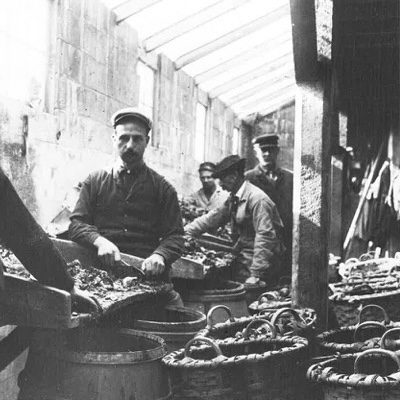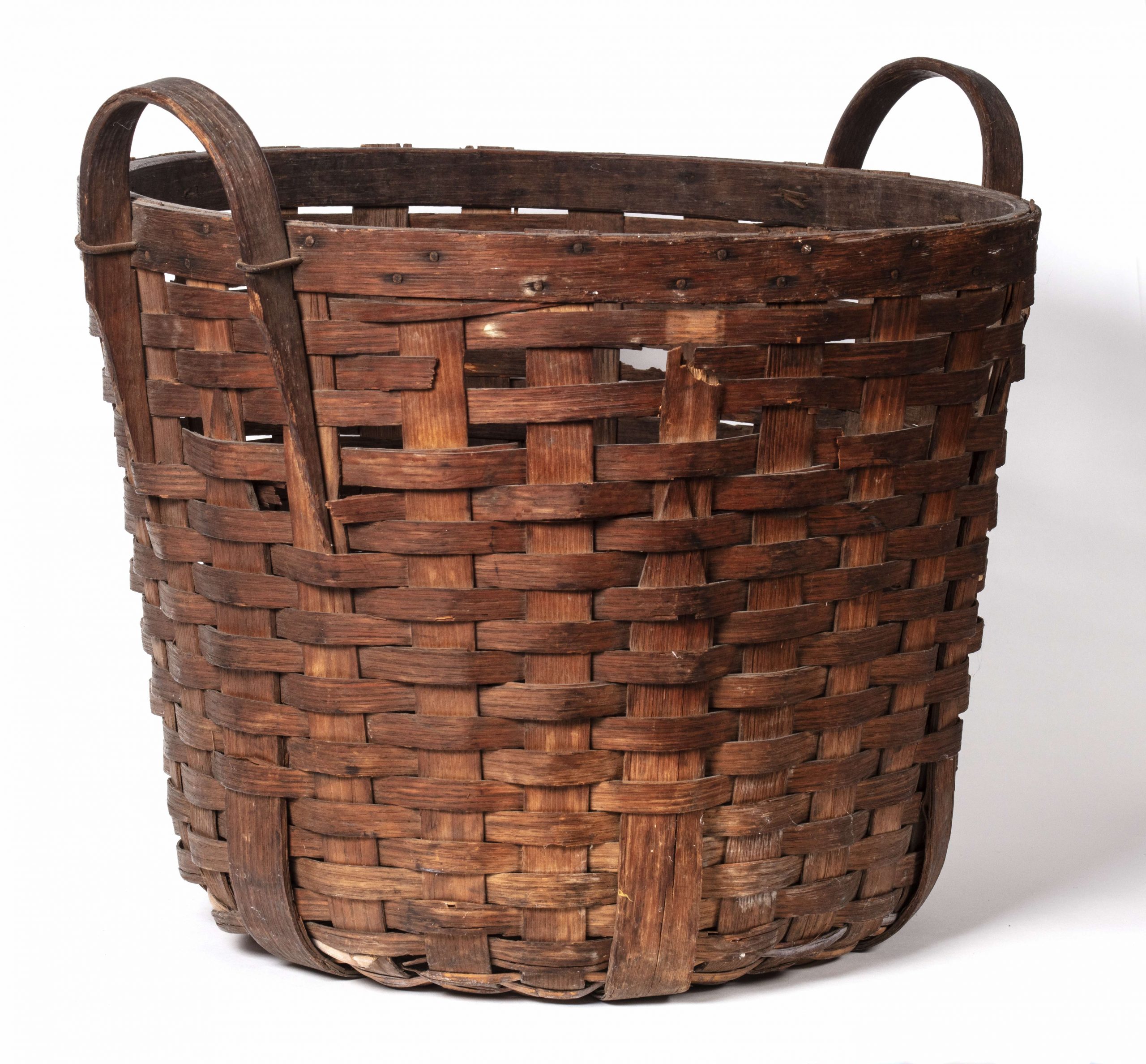Nostrand & Remson, Jamaica Grocers
Edward Lange (1846-1912). Residence & Market of Nostrand & Remson. Jamaica. L.I., ca. 1887, India ink, gouache, and collaged paper on lined paper, 5.5 x 9.5 in. (unframed); 10 x 13.625 in. (framed). Preservation Long Island purchase, 1981.25
After baymen, like Charles Jones, harvested oysters from the seabed, they distributed their catch to markets across Long Island. Oysters were one of the most common fares sold by local grocers. Elijah Nostrand and Elbert Remson enlisted Lange's services to advertise their storefront and products (including oysters) in Jamaica, NY. In order to get to market, fresh oysters passed between many hands. Baymen unloaded their haul at the dock, where workers processed the catch and packed it away for shipping. Some were packed whole into barrels, others were shucked and their meat canned.


(left) Detail, Cleaning and Sorting Oysters Near Great South Bay, ca. 1900, Suffolk County Historical Society, Fullerton Collection, #1028A; (right) Shellfish basket, Preservation Long Island, Gift of Mrs. Benjamin West, 1968.33.89.9
When Lange painted Jones and his sloop, baymen harvested approximately 765 million oysters annually from the coastal waters surrounding New York City. This kind of fishing was extremely unsustainable. By the turn of the twentieth century, the number of New York oysters harvested diminished by half and complaints arose that they no longer tasted fresh. In the years following, pollution from growing manufactories in New York City and on Long Island made the water virtually uninhabitable for the sea life that once thrived.
Edward Lange (1846-1912), Sketchbook, n.d., Lead pencil and India ink on paper, 4.625 x 7.125 x .125 in. (overall), Huntington Historical Society
Throughout the late nineteenth century, shipwrights built larger and larger vessels to move people and goods from place to place. Dredging channels that led into and out of New York's harbors became necessary to clear and deepen their navigable waters. While this allowed larger vessels to traverse shallower waters, it also stirred up silt and other particulate matter. After years of dredging, this increased siltation gradually buried many oysterbeds for good. Lange took careful note of these dredges working in nearby waters, but did he realize how dramatically they would change the ecology of the coastal environment in years to come?



